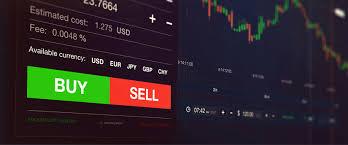
Understanding Forex Trading Time Zones: Key Strategies for Success
The foreign exchange (forex) market is the largest, most liquid financial market in the world, with daily trading volumes exceeding $6 trillion. One key factor that traders must consider when participating in forex trading is the various trading time zones that impact market activity. This article sheds light on the different forex trading time zones, their significance, and strategies to enhance trading outcomes. To kick-start your forex journey, explore forex trading time zones Uganda Brokers that offer a range of services.
The Structure of the Forex Market
The forex market operates 24 hours a day, five days a week, opening on Sunday evening and closing on Friday evening (in most regions). This extended trading period is made possible due to the global nature of the market, with transactions occurring in major financial centers around the world. The market is divided into four main trading sessions: the Sydney session, the Tokyo session, the London session, and the New York session.
1. Sydney Session
The Sydney session marks the beginning of the forex trading day. It opens at 10:00 PM GMT on Sunday and closes at 7:00 AM GMT on Monday. While this session typically experiences lower volatility compared to the others, it is crucial for traders who wish to trade Australian and New Zealand currencies or look for opportunities in the Asian markets.
2. Tokyo Session
Following the Sydney session, the Tokyo session starts at 12:00 AM GMT and ends at 9:00 AM GMT. This session sees increased activity, especially in currency pairs involving the Japanese yen, and is essential for traders looking to capitalize on Asian market movements. Volatility tends to pick up during this time as traders in Asia initiate their positions.
3. London Session

The London session is often considered the most significant session due to the high trading volume it facilitates. It opens at 8:00 AM GMT and closes at 5:00 PM GMT. This session overlaps with both the Sydney and New York sessions, leading to heightened market activity and volatility. Traders keen on major currency pairs like EUR/USD, GBP/USD, and USD/CHF should pay close attention to the London session.
4. New York Session
The New York session opens at 1:00 PM GMT and closes at 10:00 PM GMT. This session sees significant action as it coincides with the end of the London session. Many economic reports are released during this time, adding further volatility and trading opportunities. As the USD is the most traded currency worldwide, the New York session is crucial for traders focusing on American economic events.
The Importance of Time Zones in Forex Trading
Understanding forex trading time zones is essential for several reasons:
- Liquidity: Trading liquidity varies across different sessions. The London and New York sessions are known for their high liquidity, making them favorable times for entering and exiting trades.
- Volatility: Each session presents different volatility patterns. Traders should adapt their strategies according to the expected volatility during specific trading hours.
- Economic Releases: Major economic indicators are released at specific times in various countries. Knowing when these releases occur can help traders position themselves to take advantage of potential price movements.
Strategies for Trading Across Different Time Zones
To maximize trading success across different forex trading time zones, consider implementing the following strategies:
1. Session Overlap Trading

The overlapping hours between different trading sessions (e.g., London-New York overlap) usually result in heightened volatility and liquidity. Focus on trading during these overlapping periods for better opportunities.
2. Economic Calendar Awareness
Staying informed about important economic releases and news events related to the currencies you are trading is vital. Utilize an economic calendar to time your trades and avoid periods of unexpected volatility.
3. Adjusting Trading Hours
Traders in different regions may want to adjust their trading hours based on the market conditions. If you are in a location where certain trading sessions are less active, consider trading during the hours of higher volatility.
4. Trend Analysis
During major trading sessions like London and New York, identify trends and patterns. Use technical analysis tools to analyze price movements and establish potential entry and exit points. The larger number of participants can create observable patterns in price action.
Conclusion
Understanding forex trading time zones is crucial for any trader aiming to optimize their trading strategy. By recognizing the structure of the forex market, leveraging high-liquidity periods, and being aware of economic events, traders can enhance their performance. Always remember to adapt your strategies to the unique characteristics of each session and remain informed about market changes.
In the fast-paced arena of forex trading, knowledge is power, and understanding trading time zones will undoubtedly contribute to a trader’s success in this dynamic market.
